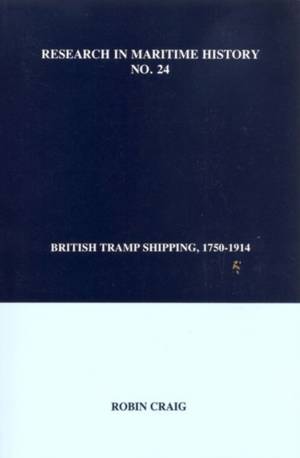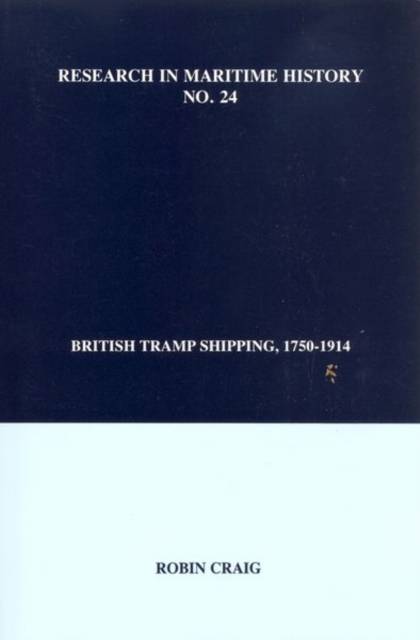
- Afhalen na 1 uur in een winkel met voorraad
- Gratis thuislevering in België vanaf € 30
- Ruim aanbod met 7 miljoen producten
- Afhalen na 1 uur in een winkel met voorraad
- Gratis thuislevering in België vanaf € 30
- Ruim aanbod met 7 miljoen producten
Zoeken
British Tramp Shipping, 1750-1914
€ 34,95
+ 69 punten
Omschrijving
This study explores the history of tramp-shipping in the United Kingdom, between 1750 and 1914. It defines 'tramp' as steamships exclusively hulled with iron or steel. The purpose of the journal is to keep the history of tramp-shipping from fading into obscurity, as the author believes the tramp steamer does not invoke sentimentality nor provide enough glamour to sustain the same level of maritime interest enjoyed by sailing ships or ocean liners. The study is split into four major sections, the first concerning tramp-shipping, ownership, and capital formation; the second concerning trade, specifically copper ore and African guano; the third studies tramp seamen - particularly sea masters; and the final and largest section considers individual tramp-shipping regions, further subdivided by region - Wales, the Northwest, the West Country, the Northeast, the Southeast, and Canada. The volume is punctuated with statistics, tables, charts, glossaries, and concludes with a bibliography of author Robin Craig's further maritime writing.
Specificaties
Betrokkenen
- Uitgeverij:
Inhoud
- Aantal bladzijden:
- 416
- Taal:
- Engels
- Reeks:
- Reeksnummer:
- nr. 24
Eigenschappen
- Productcode (EAN):
- 9780973007343
- Verschijningsdatum:
- 1/01/2003
- Uitvoering:
- Paperback
- Formaat:
- Trade paperback (VS)
- Afmetingen:
- 149 mm x 230 mm
- Gewicht:
- 653 g

Alleen bij Standaard Boekhandel
+ 69 punten op je klantenkaart van Standaard Boekhandel
Beoordelingen
We publiceren alleen reviews die voldoen aan de voorwaarden voor reviews. Bekijk onze voorwaarden voor reviews.







